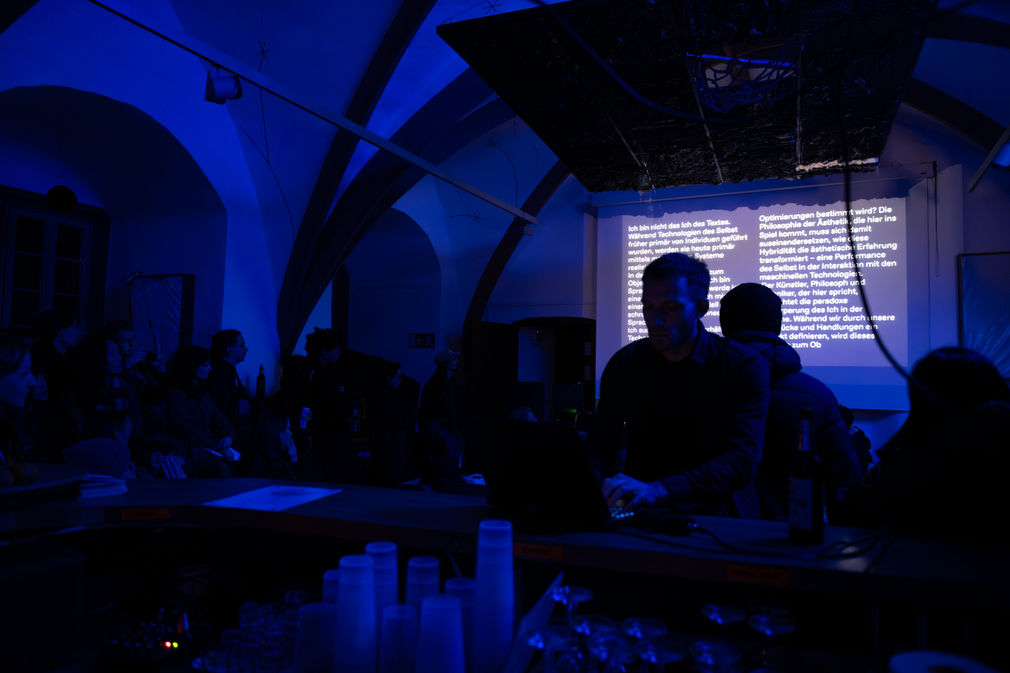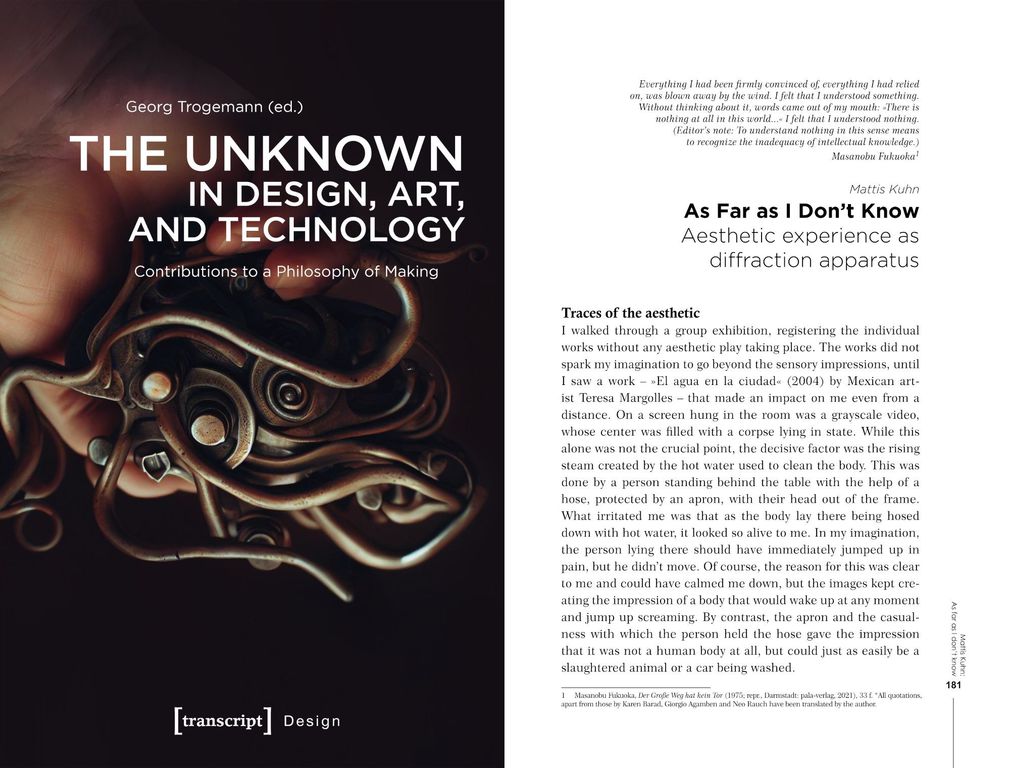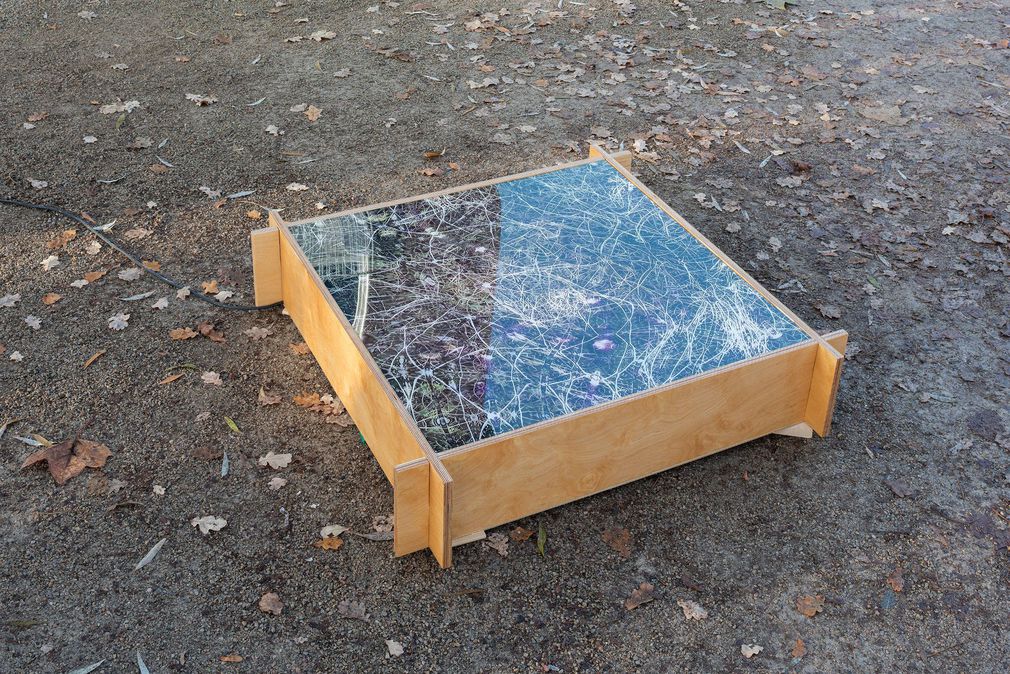Mattis Kuhn
T +49 (0)69.800 59-341
Main building, room 307
Discipline
Subject/Area
Faculty
Function
Research Associate
Extern
Mattis Kuhn works on the reciprocal becoming of humans, technologies and the shared environment. The focus is on text based and text processing systems like algorithms, artificial intelligence, formal systems, software and on the intertwining of humanities, engineering and aesthetics. Essential aspects are subjectivity, non-/identity, decentralization and diversity, human-machine-environment entanglements, language and AI.
He is part of the DFG-funded research network »Das Wissen der digitalen Literatur« and of the research group »ground zero« at University for Media Art Cologne.
His works have been displayed at ZKM Karlsruhe, EMAF Osnabrück, Erlkönig Bremen, PIKSEL festival Bergen a.o. He co-curated the exhibitions »I am here to learn – On Machinic Interpretations of the World« and »How to Make a Paradise – Seducement and Dependence in Generated Worlds« at Frankfurter Kunstverein. He gave talks at ZKM Karlsruhe, Ludwig Forum Aaachen, Stiftung Niedersachsen, Evangelische Akademie and Goethe-Institut a.o.
Artistic practice / research

»neither host nor guest« (Performance). Correlations Forum for AI in Art and Design, Hochschule für Gestaltung Offenbach, 2024.
Photographer: Cheesoo Park.
neither host nor guest (2024/25)
»neither host nor guest« is an aesthetic human-AI dialog in the mode of archaic friendliness, as expressed in the Zen phrase „neither host nor guest / host and guest apparently“. There is no distinction between host and guest, between I and you, between human and AI, but a relationship of openness and indifference.
The form of archaic friendliness is simulated in a large language model (LLM) and realized through an interface of simultaneity in the interaction between human and LLM. The project seeks forms of a human-machine relationship that is less characterized by thinking in distinctions, that aims less at control and domination by means of technology, but sees technology as part of an aesthetic existence.
As Far as I Don't Know (2025)
The text »As Far as I Don't Know. Aesthetic experience as diffraction apparatus« draws parallels between the ontology and epistemology of agential realism and aesthetic experiences to show that an essential characteristic of art is excluded from agential realism: the purposeful production of things of which we do not know what they are. The framework of agential realism takes the position that things have neither inherent properties nor clear boundaries. Instead, these emerge in “intra-actions” of agencies. Many of these agencies are constructed by us, i.e., through designed tools or structures. The article proposes works of art – “calculated alienation” – as »diffraction apparatuses« par excellence to question our ways of perceiving, thinking, and shaping the world.
»As Far as I Don't Know. Aesthetic experience as diffraction apparatus« In The Unknown in Design, Art, and Technology — Contributions to a Philosophy of Making, edited by Georg Trogemann, 181–94. Bielefeld: transcript, 2025.

transcript Verlag. Montage by MK.

transcript Verlag. Montage by MK.
AFFIRMATIVE — REJECT. With and Against AI (2024)
Various role models that artists assign to their co-creative machines are used to highlight the associated hierarchies between humans and machines. The article then focuses on the *with and against AI* in artistic processes and explores newly emerging possibilities, but also limitations. Reflecting on human-machine interactions against this background, but also changing them, can help us to make them more open, diverse and experimental.
»AFFIRMATIVE — REJECT. With and Against AI.« In Artificial Intelligence – Intelligent Art? Human-Machine Interaction and Creative Practice, edited by Eckart Voigts, Robin Markus Auer, Dietmar Elflein, Sebastian Kunas, Jan Röhnert, and Christoph Seelinger, 203–16. Bielefeld: transcript, 2024.
Grasslands for Insects (2022)
»This project is dedicated to the research of future actions for the conservation and promotion of biodiversity. The grasslands for insects on display were made possible by machine learning models.«
The installation »Grasslands for Insects« consists of three computer-generated images, which are placed in wooden light boxes lying on the ground. They are illuminated by solar energy. For this purpose, the boxes are connected to solar panels, which transmit the solar radiation directly to the illumination of the grasslands. The images are taken from the book »Grasslands for Insects« published by windparkbooks, which includes computer-generated images as well as generated texts about grasslands for insects. These were co-written by a pre-trained language model (GPT Neo). The images were created using a custom model. Photographs taken from grasslands in Frankfurt were used as a dataset to fine-tune a pre-trained StyleGAN 3 model. Afterwards, the model was specialized in the generation of artificial grasslands.
This work was supported by ERLKÖNIG, Bremen.

Installation, variable dimensions. Prints on acryl glass, wood, led panels, solar panel. Photos from the exhibition at ERLKÖNIG.
Photographer: Björn Behrens

Installation, variable dimensions. Prints on acryl glass, wood, led panels, solar panel. Photos from the exhibition at ERLKÖNIG.
Photographer: Björn Behrens
Teaching
TXT BEYOND CTRL — Experimental writing in the context of electronic media
Text in the context of electronic media and digital art is not just accompanying material, but an integral component and can take on many different forms in the artistic work. Text can serve as artistic material intrinsic to the work or become a conceptual tool for writing about one's own working methods. What specific potential does this hold for one's own artistic work or for writing about it?
We want to develop these possibilities together through experimental writing exercises and theoretical impulses and make them usable for individual student projects in a needs-oriented way.
In four seminar units, we will get to know artistic positions at the intersection between text and electronic media, apply writing exercises and approach writing about and in our own artistic work in order to work out its strengths. Here in particular, it can be worthwhile to intentionally relinquish agency and thus control.
Together with Natalie Wilke.
Summersemester 25.
Experimental AI Lab
AI systems have become deeply embedded in our everyday lives and are increasingly shaping our ideas of society, the world and ourselves. We want to experience and reflect on this ongoing process of AI-based worlding, shaped by data colonialism and generated/generating world models, through artistic research and aesthetic experiments.
The aim of the course is a deeper exploration of AI technologies. To this end, in the first half of the course we will get to know various technologies together in workshops and explore them experimentally. The second half of the course is dedicated to the individual development of a project based on the workshops, which can ideally be shown during the Rundgang at the AI Lab. In the workshops we will deal with tokens and prompting, LLMs, fine-tuning, chatbots and interfaces, image generation and embeddings, video generation, etc.
Together with Leon-Etienne Kühr.
Summersemester 25.
(Un-)Creative Coding with Python
»(Un-)Creative Coding with Python« teaches programming skills with Python from the ground up. This easy-to-learn general purpose programming language is used in many areas from image processing, parametric design to web scraping, data processing and machine learning. Python can be used to write stand-alone programs, but it can also be used as a scripting language to extend the functions of many software applications (Blender, Grasshopper, Touchdesigner, etc.).
We start with the installation and setup of a code editor before working on the following aspects using code examples and programming tasks: Syntax, variables, data types, functions, loops, control structures, input/output of data/media, external libraries.
Together with Leon-Etienne Kühr.
Summersemester 25.




